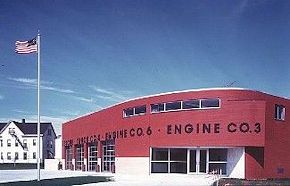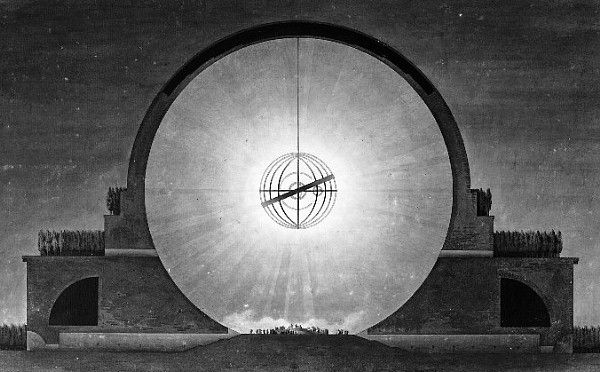To ERr w/SG could be the whole Eisenman as Piranesi exposé and an unraveling (somewhat) of Tafuri's interpretation (of the Campo Marzio). The missing notion of reenactment within "dans le boudoir" could happen here.
| |
2003.10.03 11:51
Re: paper
In what ways has Modernism also become a tradition? And in what ways hasn't Modernism become a tradition?
2008.10.07 17:07
"I'd say, socially, economically and geographically responsive architecture will trump 'all' and be the movement."
And has architecture really become more about spectacle than building? And, if so, are architects blameless?
2008.10.21 08:58
californication
Did Ruskin really say something like 'there would be no memory without architecture'?
2008.10.25 12:26
front-line ideas + regional tradition = potential for a design culture of thinking/making?
Regarding Jarzombek's "Un-Messy Realism", what's important comes at the end:
"We have to realize that our discipline is undergoing an inner transformation of historical import and that sooner or later it will yield an educational system far different from the one we grew up with in the last twenty years. But whether this is for better or worse is difficult to ascertain since there is also a collusion of silence in academe about where the ghost ship is heading."
The "collusion of silence", like a law of silence (utilized by various emperors) is an effective form of control.
More likely it is an outer transformation that is bringing about the inner transformation.
A "collusion of silence" can also breed ignorance via ignoring.
"Official art culture is much more effective in its control of history than Republican strategists, for it knows that the best way to treat contradictory material is not to rail against it, but simply to pretend it didn't happen."
--Mike Kelley, 1992
Be watchful of the inner and the outer to see the full picture.
2008.12.14 10:40
Shape and Form
Louis Sullivan's form follows function argued against architecture's form having become too removed from its function--banks shouldn't look like ancient temples; bankers don't wear togas. When Sullivan was in Philadelphia working at Frank Furness' office, 1872-73, it was on the same block as, if not right across the street from, William Strickland's Second Bank of the United States, with very severe Doric temple fronts, 1819-24. Strickland's Philadelphia architecture was meant to represent the United States as the new democracy, thus emulating (reenacting) the architecture of the old democracy of ancient Greece. Note, however, the similarity of the contemporaneous works of Strickland and Schinkel point to other factors also being present within the formulation of Strickland's style, likely the influence of the " Grand Durand".
As it stands, the Second Bank of the United States is made of King of Prussia(n blue) marble.
Actually, the columns are crumbling due to having been originally hewn incorrectly.
"You mean form does not follow function when hewn incorrectly?!?"
| |
2008.12.25 19:05
pragmatists turning political?
When AZP writes "or to explain the breakdown of the correlation between interior and exterior and private and public, are legitimate poltical performances," it only seems fair to include UnStudio's work.
I mentioned UnStudio's Yokohama terminal project because "the organizing principle of the terminal is the structural association of architecture to infrastructure and landscape; garden-like voids are absorbed into the architecture and then proceed to transform it" and one of the section drawings calls out a 'climatic facade system'. Further reading reveals some strangeness, however. "This design-by-section represents one of our first, incomplete, experiments with 4-D architecture. The building itself was never designed, but 30 sections were worked out, after which 3-D Studio was used to fill in what was left." "Finally a photo-shopped skin was wrapped around the resulting composition in order to simulate the appearance of a building." Politics of the envelope indeed?
from Webster's Third International Dictionary:
politics 1 a : the art or science of government : a science dealing with the regulation and control of men living in society (as nations or states) in both internal and external affairs : the art of adjusting and ordering relationships between individuals and groups in a political community
Electronic Calculation Center Olivetti at Rho-Milan
The huge development is divided into three construction stages:
First stage: main entrance with restaurants, library and other social facilities, then the first sguare workshop block measuring 350 ft. x 350 ft. Above this block are ten storeys of research laboratories.
The assembly shops are at ground level. The entrances, however, are located at roof level. By means of an entrance ramp the employees reach the connecting corridors which lead to the three [amoebae]-shaped locker and washroom blocks. One enters the various shops at ground level by means of stairways.
The workrooms receive well-distributed daylight from above; there is also a plantation on the roof and a sprinkler system which provides cooling during hot weather.
Again AZP: "...certain manipulations of the ground and the roof indicate the politicization of nature."
2009.02.05 11:43
Venturi's Lieb (No. 9) House to be moved (or demolished)
And now going on to another dossier--the influence (back in the day) of Venturi et al on Gehry.
2009.02.05 17:12
Venturi's Lieb (No. 9) House to be moved (or demolished)

1974 peeling wall detail as precursor of Gehry's later pliancy?
| |
2009.02.12 10:44
pragmatists turning political?

Is not "Politics of the Envelope" more about how certain different building envelope configurations perform? The "politics" lies in the performance, and it is within the power of the architect to consciously design envelopes that perform well.
The indexicality is acute in that political envelopes execute performance, and not just represent 'power'.
|

